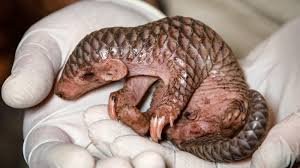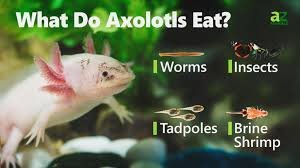
giant anaconda
Introduction to the Giant Anaconda
The Giant Anaconda, also known as the Green Anaconda (Eunectes murinus), is the largest and heaviest snake in the world. Native to the tropical rainforests of South America, this massive constrictor has long been a source of myth, fascination, and fear. Despite its notorious reputation, much of what is believed about the anaconda stems from exaggerated tales rather than science. In this article, we will uncover the truth about this incredible creature, exploring its physical characteristics, habitat, behavior, reproduction, and its role in the ecosystem.
Physical Characteristics of the Giant Anaconda
The Green Anaconda is a member of the Boa family and is known for its immense girth, muscle mass, and length. Adults typically measure between 15 to 20 feet, although verified specimens of over 25 feet have been recorded. These snakes can weigh more than 500 pounds, making them the heaviest snakes on Earth. The body is olive green with black blotches arranged in a symmetrical pattern. This coloring allows it to blend into the murky waters and vegetation of its swampy environment. The head is relatively small compared to the body, with eyes and nostrils positioned on top, allowing the anaconda to breathe and observe while mostly submerged. Their scales are thick and overlapping, which not only protects the body but helps it move smoothly through both water and land.
Habitat and Geographic Range
Anacondas are primarily found in South America, particularly in the Amazon and Orinoco basins, including countries like Brazil, Venezuela, Colombia, Ecuador, Peru, and Bolivia. They prefer slow-moving rivers, swamps, marshes, and flooded forests. These environments provide ample prey and the concealment needed for ambush hunting. During the dry season, anacondas may retreat to mud holes or underwater caves, whereas in the wet season, they are often seen gliding silently across flooded plains. Their dependency on aquatic environments makes them excellent swimmers, but they are slow and vulnerable on land.
Behavior and Hunting Techniques
Anacondas are non-venomous constrictors, meaning they kill their prey by coiling around it and squeezing until the victim dies of circulatory arrest or asphyxiation. These snakes are ambush predators—they lie in wait near the water’s edge, using their camouflage and stillness to remain undetected. When suitable prey approaches, they strike quickly, dragging the animal into the water if necessary. Their diet is highly varied, including fish, birds, caimans, capybaras, deer, and occasionally jaguars. They are opportunistic eaters and can consume prey as large as themselves due to their expandable jaws and elastic skin. After a large meal, a giant anaconda may not eat for weeks or even months.
Reproduction and Life Cycle
One of the most fascinating aspects of anaconda biology is their reproductive behavior. Anacondas are ovoviviparous, meaning they give birth to live young rather than laying eggs. During the breeding season, usually between April and May, mating balls form—where one large female is surrounded by multiple smaller males competing for the chance to mate. This can last for several weeks, and it is not uncommon for females to engage in sexual cannibalism, consuming weaker males for extra energy. A female can give birth to 20 to 40 live young, each measuring around 2 feet long. These juveniles are fully independent at birth and begin hunting immediately. Anacondas reach sexual maturity at around 3 to 5 years of age and can live for up to 30 years in the wild.
Role in the Ecosystem
The giant anaconda plays a critical ecological role as an apex predator in its habitat. By regulating populations of prey animals like rodents, birds, and reptiles, it maintains a balanced ecosystem. This helps prevent overgrazing and disease outbreaks, which could otherwise affect biodiversity in the region. In turn, young or injured anacondas may fall prey to caimans, jaguars, or large birds of prey. However, adult anacondas have few natural predators. The greatest threat to them today is human activity, including deforestaton, pollution, and hunting. In some regions, they are killed out of fear or for their skin.
Anaconda Myths and Misconceptions
The giant anaconda has been the subject of legend and folklore for centuries. Stories of monstrous snakes measuring over 100 feet, capable of devouring boats and humans, have fueled the imagination of explorers and locals alike. Hollywood films like Anaconda (1997) have only exaggerated these myths. In reality, while anacondas are certainly large and powerful, there is no credible evidence of specimens exceeding 30 feet. Such exaggerated claims are likely the result of misidentification, distortion, or outright fabrication. Some researchers have proposed the existence of a now-extinct species of mega-anaconda, but no physical evidence has been found to support this theory. Despite their fearsome reputation, attacks on humans are extremely rare, and anacondas usually avoid confrontation.
Scientific Studies and Conservation
Scientific interest in the green anaconda has grown significantly in recent decades. Herpetologists study their physiology, behavior, and genetics to better understand their role in tropical ecosystems. Notably, researchers have discovered that anacondas possess highly sensitive heat receptors, which help them detect warm-blooded prey even in low visibility conditions. Conservation efforts are increasingly necessary as wetlands and rainforests continue to be destroyed. The IUCN Red List currently lists the green anaconda as “Least Concern”, but local populations are threatened by habitat loss. Conservation organizations are working to establish protected areas, raise awareness among local communities, and conduct long-term monitoring projects. Sustainable ecotourism also offers a potential path forward by providing economic incentives to preserve the anaconda’s natural habitat.
Human Interaction and Cultural Significance
In many indigenous cultures of the Amazon, the anaconda is revered as a spiritual creature, often considered a guardian of water or a symbol of power and fertility. In contrast, some communities see it as a dangerous pest. Local beliefs vary widely, but all acknowledge the snake’s commanding presence in the forest. In modern times, the anaconda has become a symbol in pop culture, tattoos, books, and music, often representing strength and mystery. However, human-animal conflict arises when anacondas are found near villages or livestock areas, leading to their persecution. Education campaigns are crucial to changing public perception, highlighting that these snakes are not villains but essential components of their ecosystems.
Conclusion: The Truth Behind the Legend
The giant anaconda is undoubtedly one of nature’s most impressive creatures, combining raw power, stealth, and grace in a way that few other animals can match. While stories of man-eating super-snakes are largely fictional, the real anaconda is equally fascinating and deserves our respect and protection. As we continue to study and understand this species, it becomes clear that the anaconda is not just a fearsome predator but a vital piece of the Amazon’s biological puzzle. Ensuring its survival will help maintain the rich biodiversity of one of the planet’s most important ecosystems.






